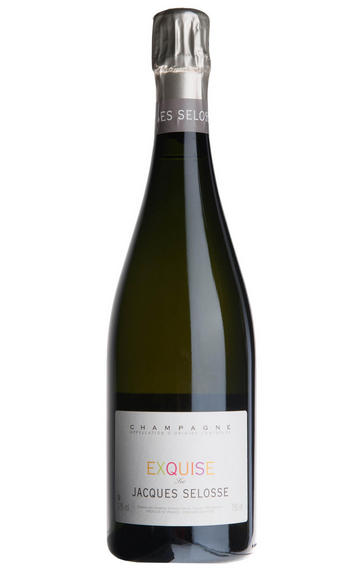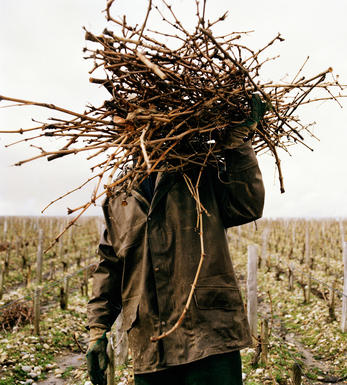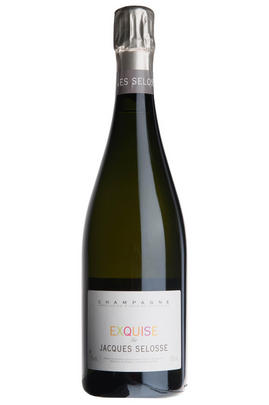
Critics reviews
The various cuvees are assembled barrel by barrel based on how the wines taste to Selosse, rather than through technical analysis and/or predetermined selection of sites, parcels, etc. Selosse’s newest wine is a solera-style Champagne from the famed Le Mesnil vineyard, perhaps the most storied site in all of Champagne. I tasted the first vintage, the 2003, which will ultimately be blended with subsequent vintages to form a solera-style Champagne. It was superb. I also tasted similar solera-style wines from Avize, Cramant, Le Mesnil, Mareuil-sur- Ay and Ambonnay from barrel, all of which were compelling.
The Selosse Champagnes possess extraordinary aromatics and a very fine mousse that is the result of density and richness in the fruit. With a few minutes in the glass, the bubbles will completely disappear from most of the wines. These Champagnes are best enjoyed with food, and should be served in generous white wine glasses rather than the customary flutes, which will allow for the full range of the wines’ aromas and flavors to emerge. Simply put, these are among the most monumental, profound wines being made anywhere, but like
About this WINE

Jacques Selosse
Anselme Selosse, variously described as eccentric, obsessed, charismatic and messianic,depending on one's point of view, is one of the most fascinating vignerons at work in Champagne today. His philosophy is conspicuously Burgundian in the winery, where all of his 35 Chardonnay plots (in Avize, Cramant, Oger, Le Mesnil, Ay, Mareuil-sur- Ay and Ambonnay) are vinified separately in small Burgundian barrels that have been bought in from Domaine Leflaive, no less.
Eschewing malolactic fermentation and keeping the dosage low are practices which find empirical antithesis in the ripeness of fruit which has been farmed as late as possible. Man and wine alike court strong opinion, in itself no bad thing in a region dominated by the power of the ur-Grandes Marques.
The range includes:
Initial - a blend of three vintages of Chardonnay grapes, aged for at least 2 years before disgorgement in a Brut style. Version Originale is also a blend of three vintages of Chardonnay, but aged longer in bottle (42 months) before disgorgment and has very little dosage (Extra Brut) style.
Millésime - a single vintage Blanc de Blancs from the grapes of two vineyards in Avize, Le Mont de Cramant and Les Chantereines. Substance is a Blanc de Blancs from a single vineyard in Avize. This Champagne is made in a unique solera system with the base grapes for this wine coming from the 1987 vintage, the blend is topped up with more recent vintages each year.
Contraste is a Blanc de Noirs, made from Pinot Noir grapes, from a single vineyard (La Côte Faron in the village of Aÿ), also made in a solera style with the base grapes from the 1994 vintage. Exquise is a Demi-Sec Blanc de Blancs champagne, with around 24g/l of dosage.

Brut Champagne
Brut denotes a dry style of Champagne (less than 15 grams per litre). Most Champagne is non-vintage, produced from a blend from different years. The non-vintage blend is always based predominately on wines made from the current harvest, enriched with aged wines (their proportion and age varies by brand) from earlier harvests, which impart an additional level of complexity to the end wine. Champagnes from a single vintage are labelled with the year reference and with the description Millésimé.
Non-vintage Champagnes can improve with short-term ageing (typically two to three years), while vintages can develop over much longer periods (five to 30 years). The most exquisite and often top-priced expression of a house’s style is referred to as Prestige Cuvée. Famous examples include Louis Roederer's Cristal, Moët & Chandon's Dom Pérignon, and Pol Roger's Cuvée Sir Winston Churchill.
Recommended Producers : Krug, Billecart Salmon, Pol Roger, Bollinger, Salon, Gosset, Pierre Péters, Ruinart

Chardonnay
Chardonnay is often seen as the king of white wine grapes and one of the most widely planted in the world It is suited to a wide variety of soils, though it excels in soils with a high limestone content as found in Champagne, Chablis, and the Côte D`Or.
Burgundy is Chardonnay's spiritual home and the best White Burgundies are dry, rich, honeyed wines with marvellous poise, elegance and balance. They are unquestionably the finest dry white wines in the world. Chardonnay plays a crucial role in the Champagne blend, providing structure and finesse, and is the sole grape in Blanc de Blancs.
It is quantitatively important in California and Australia, is widely planted in Chile and South Africa, and is the second most widely planted grape in New Zealand. In warm climates Chardonnay has a tendency to develop very high sugar levels during the final stages of ripening and this can occur at the expense of acidity. Late picking is a common problem and can result in blowsy and flabby wines that lack structure and definition.
Recently in the New World, we have seen a move towards more elegant, better- balanced and less oak-driven Chardonnays, and this is to be welcomed.



Buying options
Add to wishlist
Description
Readers will need to drop all preconceived notions about what Champagne is and can be in order to fully experience the wines of Anselme and Corinne Selosse, as these are Champagnes like no other. No one has pushed the boundaries of what Champagne can be further than Selosse. As great as his own wines are, Selosse’s most lasting legacy may very well be influencing the younger generation of producers who have worked alongside him over the years. Selosse represents the most poetic voice behind the idea that Champagne is first and foremost a wine before it is anything else. Selosse takes this one step further by eschewing vintage designations for most of his wines, as the qualities he seeks to exalt most are those of his 7.5 vineyards in Avize, Cramant, Oger, Le Mesnil, Ay, Mareuil-sur- Ay and Ambonnay.
The various cuvees are assembled barrel by barrel based on how the wines taste to Selosse, rather than through technical analysis and/or predetermined selection of sites, parcels, etc. Selosse’s newest wine is a solera-style Champagne from the famed Le Mesnil vineyard, perhaps the most storied site in all of Champagne. I tasted the first vintage, the 2003, which will ultimately be blended with subsequent vintages to form a solera-style Champagne. It was superb. I also tasted similar solera-style wines from Avize, Cramant, Le Mesnil, Mareuil-sur- Ay and Ambonnay from barrel, all of which were compelling.
The Selosse Champagnes possess extraordinary aromatics and a very fine mousse that is the result of density and richness in the fruit. With a few minutes in the glass, the bubbles will completely disappear from most of the wines. These Champagnes are best enjoyed with food, and should be served in generous white wine glasses rather than the customary flutes, which will allow for the full range of the wines’ aromas and flavors to emerge. Simply put, these are among the most monumental, profound wines being made anywhere, but like
wine at a glance
Delivery and quality guarantee